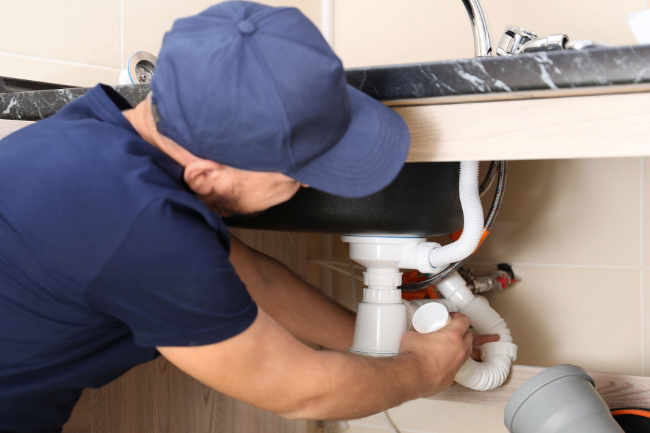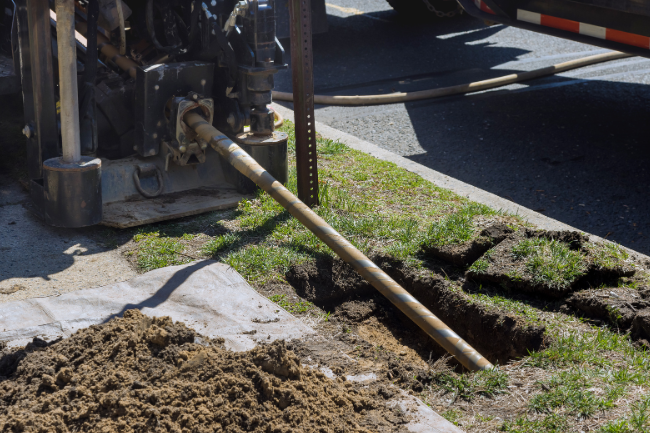Plumbing Terms and Trenchless Repair Terms Explained
Posted by William Heinselman on

While we could go on for days defining every plumbing tool, fixture, and practice out there, we’ve condensed that information and included the most relevant plumbing terms you'll need and want to know for basic plumbing repair.
That said, quick fixes, at home repair, or even small jobs don't always resolve your issues. Sometimes, you'll also need to investigate trenchless solutions for when you need to fall back on in case of drastic plumbing emergencies.
Why Understanding These Plumbing Terms is Important
As a homeowner, it is crucial to have a basic understanding of plumbing terms. Not only will it help you communicate effectively with plumbers during repairs or installations, but it can also help you troubleshoot minor issues on your own. Knowing terms like "flapper," "flow rate," and "trenchless repair" can help you identify and address potential problems before they turn into costly ones.
Additionally, having a grasp of plumbing terms can save you from being taken advantage of by dishonest contractors who may try to use confusing jargon to overcharge for their services. Overall, having knowledge of basic plumbing terms empowers homeowners to take control of their home's plumbing system and ensure its proper functioning for years to come.
Basic Plumbing Tools
It's not just about knowing the parts, but having a handle on the right tools for the job is also essential. Having these tools on hand is crucial for tackling minor plumbing repairs and routine maintenance tasks around the home, ensuring you can address issues promptly without always needing to call in a professional.
- Drain snake (or auger) - a drain snake is a bendable, hooked tool that plumbers often use to dislodge clogged debris within drain pipes. These tools can be purchased for a reasonable price, and are very useful to have on hand.
- Basin wrenches - basin wrenches are almost always necessary when working with supply lines or other hard-to-reach plumbing fixtures. These wrenches are adjustable for both various angles and lengths, providing access to even the most awkward-fitting fixtures.
- Spanner wrenches - these adjustable tools are essential in any plumbing toolkit (and home care kit, for that matter). They’re often the first thing that comes to mind when you hear the word “wrench,” so there’s a very good chance you already have one in your home somewhere. Spanner wrenches have smooth jaws and do not harm plumbing fixtures when used.
- Pipe wrenches - these tools are the safest for working with home plumbing pipes. They feature an adjustable upper jaw, which makes working with tight plumbing lines a painless task; most commonly used in maintenance for soft iron pipe and other round fixtures.
Fixture Terminology

The plumbing fixtures are commonly found around the house and come in various shapes, sizes, and materials. Knowing the terminology for these fixtures is crucial when it comes to understanding how your plumbing system works.
- Coupling - a coupling is a a piece of fitting hardware often used in plumbing systems to connect joints and pipe. Curved couplings are called elbows, and are most commonly found in either 45° or 90° angles.
- Faucet aerator - this refers to the small, screw-in-place cap on most modern faucets, which reduces splashing when water is flowing. When diagnosing sink problems, you may have to remove this piece to assess faucet internals.
- Fitting - a fitting is any piece of hardware that connects two pipe segments; couplings and elbows are both considered fittings.
- Flapper - the rubber piece inside toilet tanks that forms a seal between the tank and bowl. When toilets are flushed, this piece is raised so water can pass through into the bowl.
- Flow rate - the rate of water flow through your home or property plumbing fixtures, typically recorded in gallons per minute or hour.
- GPF, GPM and GPH - respectively, gallons per flush, gallons per minute and gallons per hour; flow rates for measuring toilet performance.
- O-ring - plumbing’s version of your conventional washer. O-rings are round, and because of such create an airtight seal when used within plumbing fixtures.
- Shutoff valve - the valve commonly below sink, tub and toilet fixtures that serves as an emergency valve in case of malfunction; during any DIY plumbing repairs, always tighten the stuff valve first.
Trenchless Pipe Repair Terms
Trenchless pipe repair refers to a method of repairing damaged or leaking pipes without excavating or digging up your yard. This technique allows for minimal disruption to your property and can save time and money compared to traditional pipe repair methods. Here are some important plumbing terms to know that are relevant to trenchless pipe repair.
- Directional boring - this refers to the minimal digging that is required when there are no pre-existing entry points for trenchless lining applications. As opposed to trenching out damaged pipes, repair technicians can access your pipe via small directional drills, which largely preserve your property and remove landscaping from the repair equation.
- Hydro-jetting - hydro-jetting is Step 1 in a trenchless application. Once damage and its extent have been assessed, trenchless experts will use jetting tools to clear pipes of debris, dirt and other materials; think power washing for your pipe walls. Then, liners and other materials can be used to restore the pipe in question.
- Manhole-to-manhole lining - this refers to trenchless repair for municipal sewer systems. Using manhole entryways, trenchless pros can apply liners and air bladders with zero digging; this saves tens of thousands of dollars in restoring sewer lines.
- Pipe bursting - when pipes are significantly damaged and cannot be restored using pipe liners, trenchless pros will recommend pipe bursting. In bursting applications, a cone-shaped, steel bursting head fragments damaged pipe from within, and installs a new pipe (connected to the bursting head) in a single, seamless application.
- Pipelining - pipe lining is the trenchless art of restoring ailing pipe lines from within. Through noninvasive entry points, trenchless experts can coat inner pipe walls and cure new pipe segments in-place using heat, water or air bladders (hence the industry term, “cured-in-place pipe”). This process can usually be completed in a single day.
- Trenchless technology - trenchless technologies are those used to repair underground pipes without the costly, invasive digging (or, “trenching”) of traditional repairs. It typically refers to pipe lining equipment, directional boring machines and pipe bursting technology.
Contact Express Sewer for Expert Plumbing Advice
Understanding the basic tools, fixture terminology, and trenchless repair terms is essential for anyone looking to tackle home or commercial plumbing repairs. Whether you're a DIY enthusiast or simply seeking to better understand the professional services you hire, this guide equips you with the necessary knowledge to navigate the complexities of plumbing.
Remember, plumbing is a critical aspect of any property's maintenance, and being informed can make all the difference in preventing small issues from becoming major problems. Have questions? The team at Express Sewer is here to help!
Topics: Trenchless Technology, Home Plumbing, Drain Cleaning and Repair

![Repiping Your Sacramento Home [6 Steps]](https://www.expresssewer.com/hs-fs/hubfs/plumbing%20tools%20and%20blueprints.jpeg?width=550)




